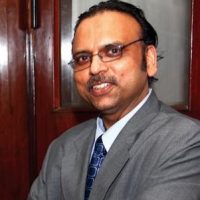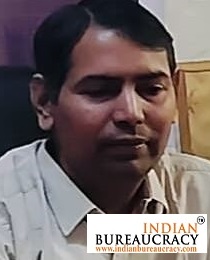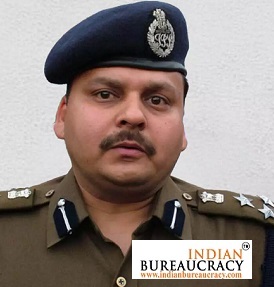The Minister of Youth Affairs and Sports Shri Sarbananda Sonowal released a case study done by IIM Ahmadabad on South Asian Games – 2016 titled “South Asian Games 2016: the dash to the North East”. On this occasion Secretary, Sports Shri Rajiv Yadav and representatives of the OC SAG were also present.
This case is a result of a study done by Prof. Sanjeev Tripathi from IIM Ahmedabad on the conduct of South Asian Games, 2016. This was the result of an endeavor of the Ministry of Youth Affairs and Sports to collaborate with management institutes to increase professionalism in the sports landscape in the country. The aim of this case study was to identify the factors that resulted in the successful conduct of the games in an extremely short period.
Executive Summary of the case
South Asian Games 2016: The dash to the North East
The South Asian Games (SAG) is a multi-sport event with eight South Asian countries competing in it: India, Pakistan, Sri Lanka, Bangladesh, Nepal, Bhutan, Maldives and Afghanistan. The 11th SAG was held in Dhaka in 2010. India offered to host the 2012 Games; however, the games got postponed due to a number of factors. Allegations of corruption in the Commonwealth Games and its repercussions and later the suspension of the Indian Olympic Association cast a shadow over the conduct of the games.
After a number of delays, in December, 2014 the Indian Olympic Association with the approval of the government decided to hold the SAG in Guwahati and Shillong in North East India. However, there were still uncertainties about the final venue of the games, these were finally sorted and the games were planned to be held in February 2016 to avoid clashes with the local festivals.
By the time the final decision was taken, it was October, 2015, and just about three months were left for the games to begin. There were a number of challenges that needed to be overcome in the organization of the games. The time was too short and because of the repeated rescheduling, there was scepticism about whether the dates would be adhered to. The Commonwealth Games held in 2010 had been plagued with the allegations of corruption and IOA officials were afraid of playing an active role in the organization of the games. IOA wanted the responsibility of technical conduct of the games only. For all other aspects of the Games, IOA wanted the Government to take the responsibility and host the Games. Even the officers and staff in the Department of Sports (DoS) under Ministry of Youth Affairs and Sports (MoYS) was worried about taking decisions with the fear of being penalized later on charges of corruption. Large multi sports events had been a rarity in North East and an international event of this stature was planned for the first time in North East. As such there was a concern about whether the infrastructure would be ready in time for hosting the games and to accommodate the athletes and the delegations. Finally, assembly elections in the state of Assam were scheduled in April 2016, and the success or the failure in organizing the games could become an election issue. The Minister of Youth Affairs and Sports, Shri Sarbananda Sonowal (from BJP) and Shri Tarun Gogoi (from Congress) the current Chief Minister of Assam would need to work together, however, they were political rivals and also aspirants for the post of Chief Minister of Assam.
The Secretary, Shri Rajiv Yadav had joined the Department of Sports in September and he had hardly any time to plan for the games, given the challenges and shortage of time. IOA was apprehensive in taking responsibility in organization of the games. Hence, accountability, responsibility and faster decision making was ensured by having the Minister MOYS, Shri Sonowal to head the South Asian Games Organizing Committee. Further, the SAGOC, was expanded to induct officers who had an in-depth experience of organizing sports events and also had an understanding of the situation in the two North Eastern states. In this regard, Shri Injeti Srinivas, Director General (DG) of Sports Authority of India (SAI) joined as CEO Guwahati, Shri R.K. Sharma retired Director General of Police (Meghalaya) was designated as CEO Shillong and Shri Avinash Joshi an IAS officer of Assam-Meghalaya cadre who had played a role in the organization of national games in Gauwahati was inducted as Joint CEO of SAGOC. Shri Sonowal was himself from Assam and Shri Yadav, the Secretary (DoS), from Assam-Maghalaya IAS cadre had worked in this region extensively and had an in-depth understanding of the ground situation in the two states.
Some of the participating countries were sceptical of participating in the games owing to concerns about the security situation and their doubts about whether the games would be held. Delegations were sent to all the participating countries to reassure them about the games and this proved useful as all the countries committed to attend the games. To publicize the games and involve the local public, a promotional campaign was launched which focussed on Facebook, Twitter and Youtube besides the traditional channels such as TV, Newspaper and Radio.
To deal with the corruption issues, most of the purchasing was done through online portals. An Internal Working Group, operating within the DoS, met weekly to fast track any procurement issues. Shri Sunil Verma, the retired Deputy Comptroller and Auditor General of India, was appointed as ethical adviser to the SAGOC to ensure transparency, proper utilization of money and probity of the highest order in spending money.
The games were finally held on schedule in just about 90 days of the announcement of schedule. The opening and closing ceremony of the games were a big success and showcased the regional culture with a digital theme. The mascot of the games Tikhor, was able to connect with everyone and brought in a theme of naughtiness, fun and sensitivity towards preserving wild life. On the sports front, India once again emerged as a sports super power at a regional level, winning about 40% of all the medals.
Looking back it was obvious that a number of factors had worked in making the games a success. The SAGOC had a good mix of administrative experience, an expertise in organizing sports events and an appreciation of issues in the two states. The close coordination between the state government and the central government keeping aside the political differences was another important reason for the success of the games. The close coordination of SAGOC with SAI played a major role in getting the venues and other infrastructure in place, this was facilitated by the presence of DG SAI, Shri Srinivas as CEO of SAGOC. The promotional campaign proved to be a big success and was able to establish connect with people both at local and national level. Specially, the digital campaign was able to attract a large following from younger segment. This was a result of a well thought out integrated marketing campaign with a 360 degree presence across various media channels.
Now, that the games were over, Secretary (Sports) felt that it was important to capture the key learnings from the organization of the games and to adopt these as best practices. He wanted to deliberate over this with his team and to brief MoS (I/C) YA&S about the lessons learnt from the games.





